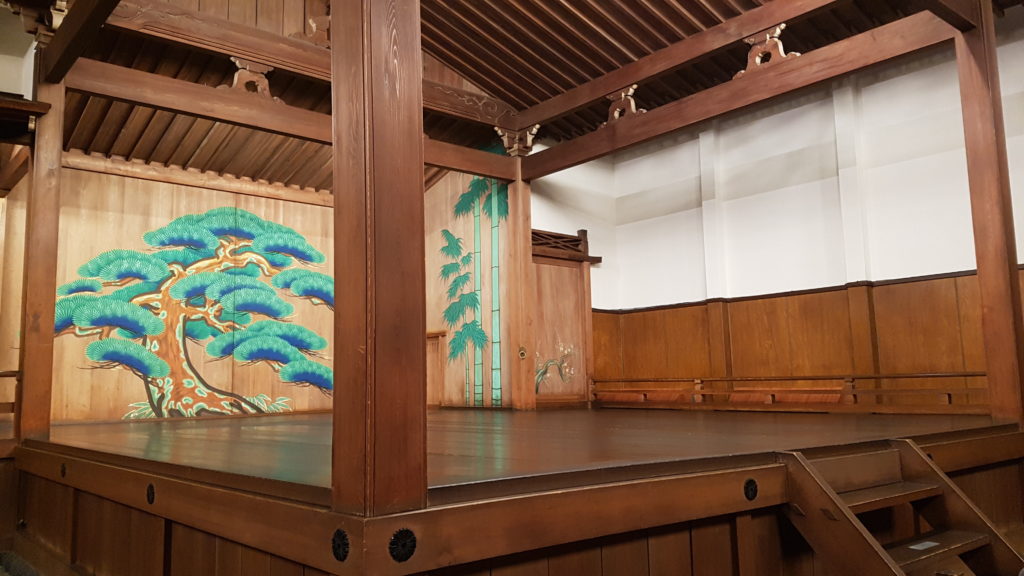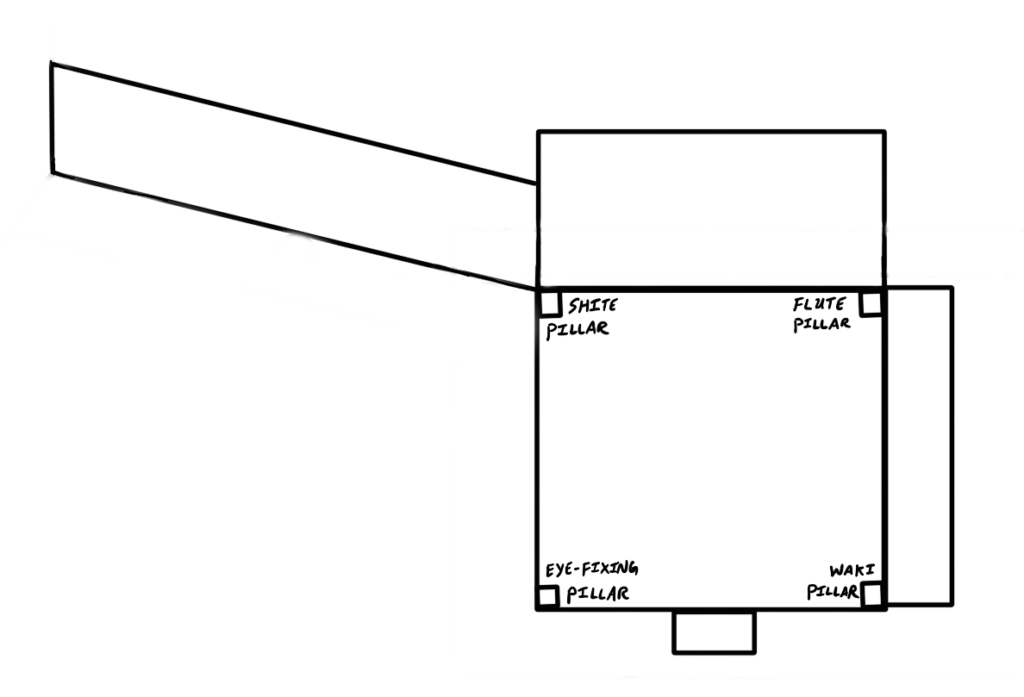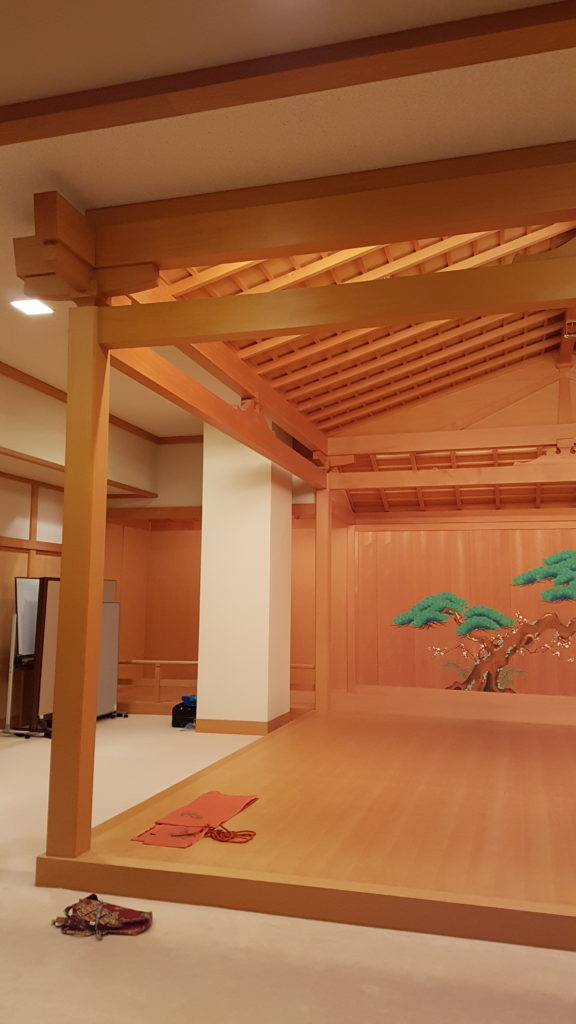
In addition to supporting the stage roof, the pillars (hashira) are used by the performers to help orient themselves on the stage—especially important when performing a role that require wearing a mask, which greatly reduce the actor’s field of vision. The four pillars are called the shite pillar (shite-bashira), flute pillar (fue-bashira), eye-fixing pillar (metsuke–bashira), and waki pillar (waki-bashira).
Some kyōgen plays require the actors will to use the pillars in their story telling, such as the Landowner grabbing the shite pillar in The Yamabushi and the Persimmon Tree (Kaki Yamabushi) or tying a prop to the waki pillar in The “Sickley” Stomach (Kamabara).

